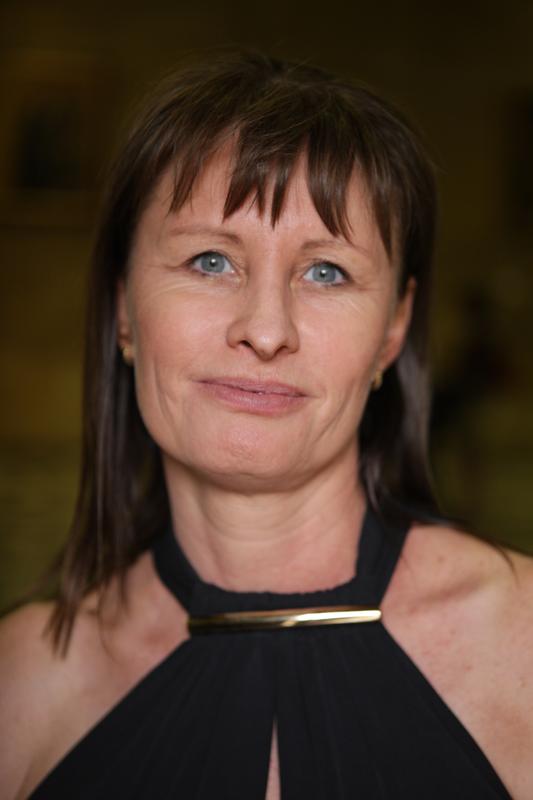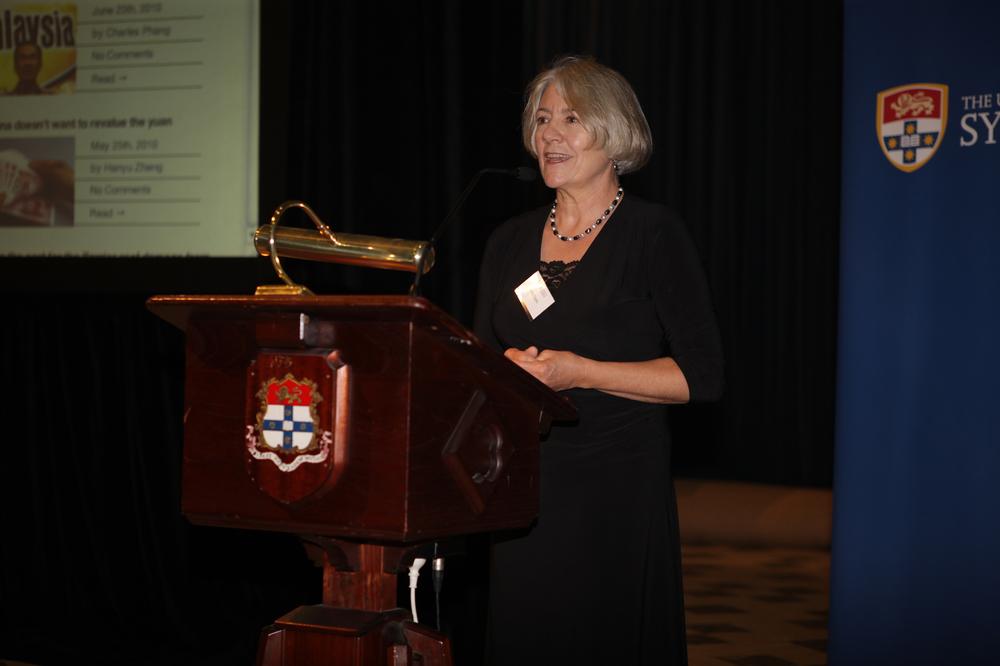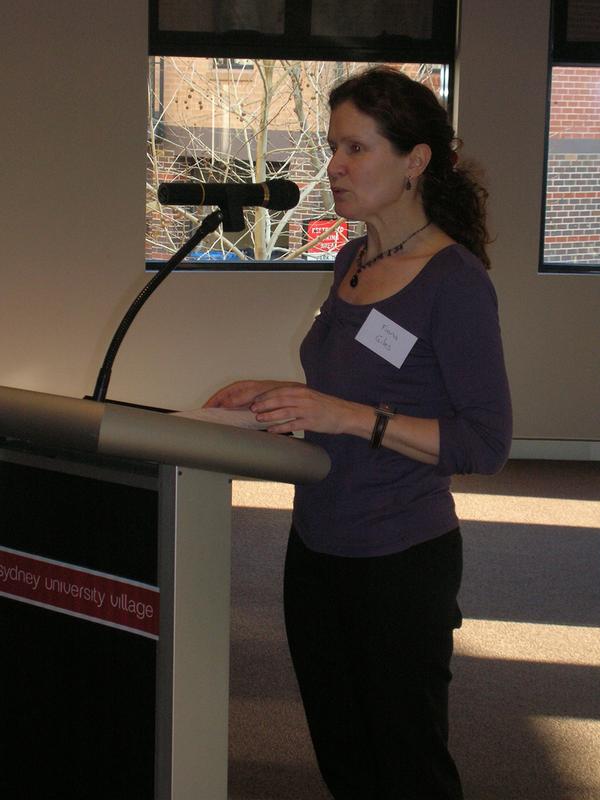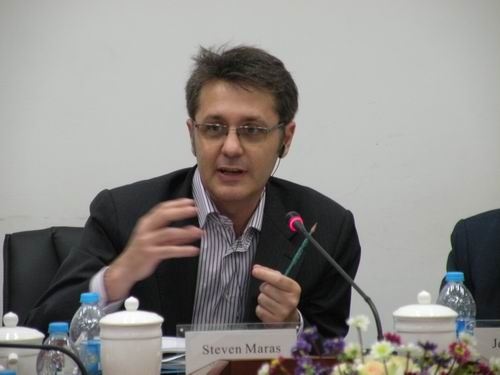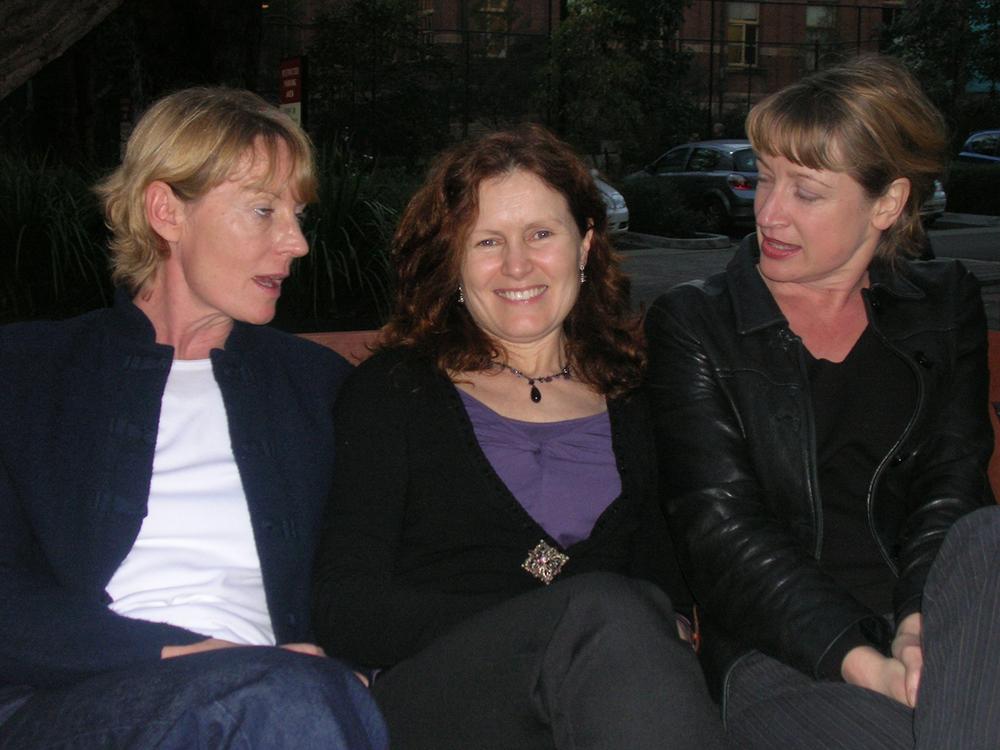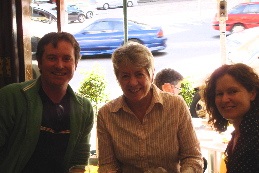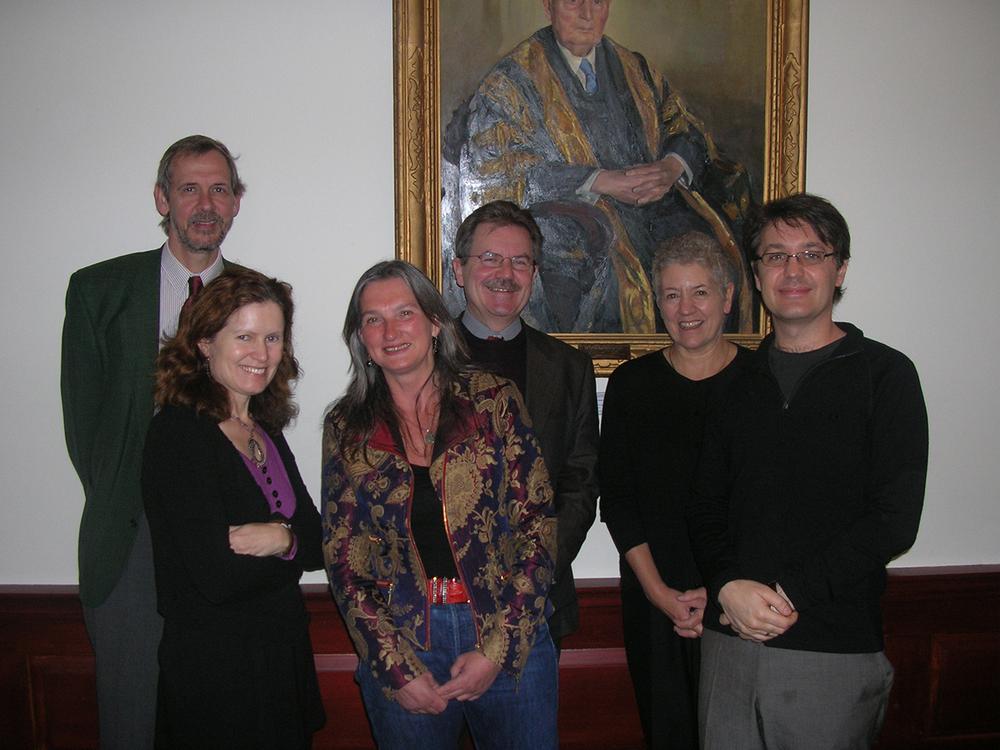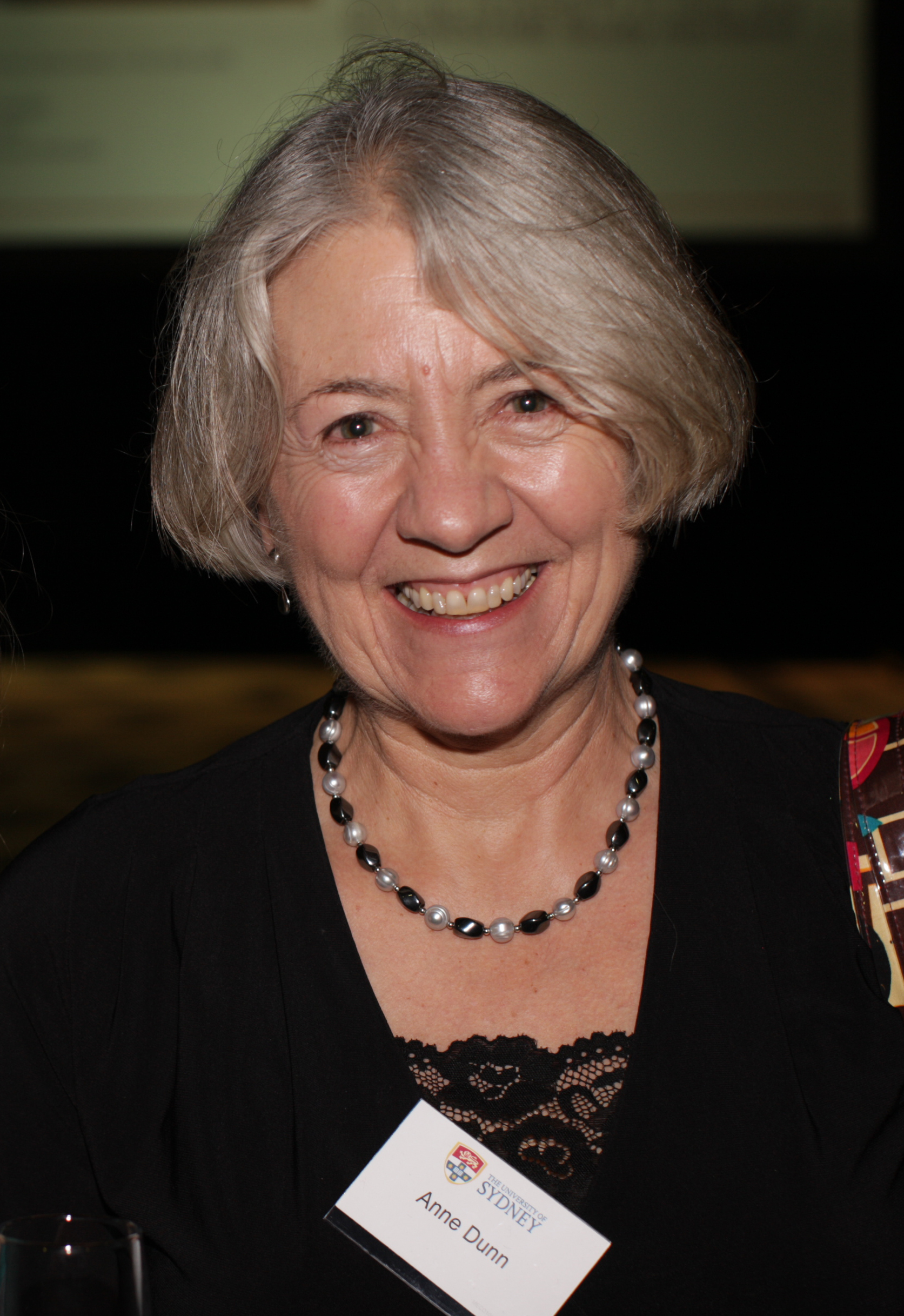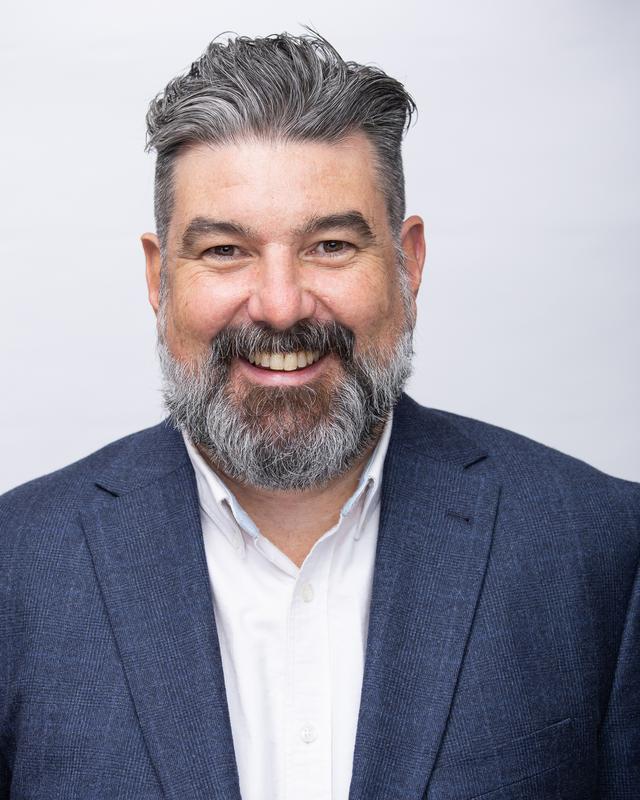2
Infant program leaps to prominence: MECO from 2006 to 2013
Infant program leaps to prominence
In the short space of six years, MECO had evolved from a program with a single staff member to a dynamic media and communications department. The place of such a program at one of the oldest sandstone universities in the country was initially questioned, particularly by more traditional academics in the Arts faculty. Surely a program with such a strong vocational focus was more at home in one of the newer universities. However, the program’s unmitigated success gave the field of media and communications a foothold at the University of Sydney. It was an experiment that had clearly paid off.
The years between 2006 and 2013 was a period of consolidation. It was a time of further cementing and building on the efforts of foundational staff to develop a course that gave a new generation of journalists the tools and theoretical framework necessary to face the rapidly changing media landscape of the early 21st century. As well as having proved its place at the University of Sydney, it differentiated itself from comparable courses at other universities by grounding theoretical and practical media education within the humanities, with half the degree subjects drawn from the Bachelor of Arts program.
One lunchtime in 2021 I spoke to Catharine Lumby over the phone. Our conversation meandered through the early years of the department up to today. She explained the history of the department, piecing memories together into a timeline as we talked. Our focus continually returned to the teaching rationale. She is clearly a passionate educator, with a great deal of respect for her colleagues and pride in the achievements of the department.
Throughout our conversation, the importance of teaching students both technical skills and theory was a recurrent theme. Lumby emphasised that “tech skills were taught to ground storytelling capacity”. In designing the program, both she and Anne Dunn had an eye for the ways in which the industry was changing. They predicted the impact the internet would have on the media industry and responded practically to increased job insecurity and the rise of the gig economy, placing importance on flexible and adaptable skills in their teaching approach. Within the course, students were encouraged to build a range of skills across audiovisual and written media with no option to simply specialise in print, media or radio journalism. They were also required to complete a second major within their Bachelor of Arts.
Lumby referred to the approach as an “Ikea model” of teaching, in which different skills could be flat-packed and assembled in response to individual jobs and specific storytelling requirements. With a firm belief that narrative underscored many of the potential pathways students might take, ranging from journalistic work to marketing and advertising, the aim was to teach principles that could be adapted and translated in different formats, across what would hopefully be a long career. According to Lumby, the philosophy of the department was “not about content, but about helping someone form themselves, and their desire and capacity to learn”.
Dunn and Lumby encouraged students to think critically, as well as reflect on who they were and what they wanted. With a cohort capped at 100 – something that was implemented from the commencement of the program – it was possible to take a very personalised approach, and they would speak individually to each student entering the program, asking them, “who are you, what do you want to achieve, and how can we support you?”
From its inception, the degree attracted a high calibre of students. With a Universities Admission Index (UAI) over 99 for local students, it was widely perceived as an alternative to Medicine and Law for high achieving students. This high bar of entry was not intentional, but the result of limited capacity imposed by specialised facilities such as the media labs.
A significant downside of this was that the cohort lacked diversity. Lumby was matter of fact when she told me, “We were very concerned about increasing the number of Indigenous students, which I know was dear to Anne’s heart, and also increasing the number of low SES students because a lot of the students we got at undergraduate level had gone to private or selective schools.”
Together, Lumby and Dunn identified alternative entry pathways offered by the University, and applied these to their program to allow students to apply for the course based on the submission of an essay, portfolio or work experience. Reflecting on these pathways, Lumby continued, “We do know that actually it’s not the young people with high ATAR [Australian Tertiary Admission Rank, replaced UAI in 2009] scores that necessarily succeed. You can have people with much lower ATAR scores who, if they’re well and properly supported, can thrive.” Moreover, the Master of Media Practice (see Chapter 9) was a conversion degree with no requirement for previous study in media, offering a pathway for students who had not studied media in their undergraduate degree and wanted to change career directions.
In addition to the Master of Media Practice, three more postgraduate coursework programs were introduced: the Master of Strategic Public Relations in 2006 (Chapter 11); the Master of Publishing in 2007 (Chapter 12); and the Master of Health Communication in 2009 (Chapter 13). These courses, according to Lumby, “took off quickly” and further expanded the student body, attracting a combination of mid-career local students and international students, predominantly from mainland China. Regarding the implementation of the postgraduate courses, Lumby said, “The idea was to provide learning and career opportunities for local students looking to go back to university and add to their CVs, and also to provide opportunities for international students, and our view was always that local and international students could learn from each other.”
Steven Maras told me that during this period links were forged with Fudan University, especially around the Health Communication degree. Fiona Giles and Dunn also negotiated an annual agreement whereby China Daily selected one of its journalism staff members to complete a Master of Media Practice and, in exchange, supported a MECO master’s student to complete an internship in Beijing.
Maras described the department in this period as “effectively still in growth mode”, noting that the student numbers at postgraduate level were “remarkable”. These courses were fee-paying and brought in large amounts of revenue to the University. Hearteningly, in the early years of these postgraduate programs, some of this money was put directly back into the department and used to hire more staff, including Fiona Giles, Alana Mann, Sean Chaidaroon, Penny O’Donnell, Fiona Martin, Tim Dwyer, Antonio Castillo, Megan Le Masurier and Joyce Nip. Gerard Goggin also joined the department in 2006, bringing his Australian Research Council (ARC) Australian Research Fellowship. These staff were at the cutting edge of research into journalism and media practice, new media policy, and convergence.
Despite the expansion of the department in this period, there were also some notable departures. In late 2007, Lumby left to take up a new position at UNSW as establishment director of the Journalism and Media Centre. Kate Crawford joined her, as did Goggin as deputy director. Maras noted that Lumby’s departure was “a blow to the discipline”, but the faculty was very supportive. Dunn stepped into the role of department chair, a position she held for only a year before, in recognition of her managerial talents as associate dean and co-chair of the undergraduate committee, she was seconded to the role of pro-dean and then acting dean of the faculty in 2009–10. In 2009, Maras took over the position of department chair, followed by Marc Brennan in 2011. The demands on the faculty at this stage were huge. As Maras reflected, “we were all senior lecturers and lecturers being asked to do extraordinary things”.
Infrastructure and digital media support was still an ongoing issue. Maras remembers working on an extensive needs analysis for the department in 2010 with then head of school Tim Fitzpatrick and Phil Glen as an external consultant. This followed the demise of the Arts Digital unit, which was the blueprint for the emergence of the Digital Media Unit (see Chapter 6). The Arts Digital unit was launched in 2009 to provide a central point of contact for all support in the Faculty of Arts.
During this period, staff also focused on balancing teaching and research alongside involvement with the industry. This seems to have stemmed, in part, from the fact that staff had been industry practitioners prior to moving into academia and now maintained those connections. Lumby told me that “none of us were afraid to go out into the media – many of us had been journalists – and talk about ideas, and actually take our research out there, rather than just sitting in our office and writing another journal article.” Staff were encouraged to go on TV, talk to newspapers and write opinion pieces.
Marc Brennan told me that, in the early years, “students weren’t that interested in theory, frameworks, evaluating arguments – critical practice in general”. He explained that this attitude changed over time, influenced by the lecturers who modelled the integration of theory and practice in their own work.
In 2010, using funds allocated for a professor in the area, the department celebrated 10 years since its inception by appointing Peter Fray, then publisher and editor of The Sydney Morning Herald, as the First Decade Fellow. Maras described this as “an attempt to build bridges between education and industry at a scale not often attempted”. Fray used the fellowship as an opportunity to research the changing landscape of journalism, focusing on the role of the editor. This echoed industry concerns that Lumby and Dunn had also attempted to address in their teaching approach.
In early 2011, Goggin returned as inaugural Professor of Media and Communications, and assumed the role of chair a year later. Also in 2011, Olaf Werder came to MECO and began coordinating the Master of Health Communication.
Despite these additions, Maras noted that 2011–12 were difficult years. There was a significant university restructure, which saw staff members, including Brennan and Antonio Castillo, leave to take up opportunities elsewhere. Then, in 2012, Dunn died from breast cancer. Her loss was felt throughout the department, as well as by many former students whom she had generously mentored. Dunn had been critical to the success of the department. She was, as Fiona Martin recalls, an important bridge between academia and industry, bringing the world’s public service media research conference, RIPE, out of Europe and to the Asian region for the first time, and engaging the Australian Broadcasting Corporation (ABC) and Special Broadcasting Service (SBS) as partners in the conference program.
Dunn’s managerial and broadcasting expertise had been crucial in helping to build MECO, but perhaps more important was what Lumby remembers as “her ethical, professional, calm sense of judgement, and her kindness”. In 2014, a scholarship was established in her name, supported by the Journalism Education and Research Association of Australia (JERAA), Australia and New Zealand Communication Association (ANZCA), and Dunn’s mother and siblings. In Dunn’s memory, it supports excellence in research in communications and journalism for the public benefit.
In 2020, Penny O’Donnell, a member of the department since 2008, won this award for her contributions to the industry and research, particularly her work examining job losses in journalism under the auspices of the New Beats project. In her application, O’Donnell reflected on Dunn’s influence on her own career, noting her dedication to collaboration, student-focused journalism education and her “unwavering resolve to foster news media change”. In summing up, she wrote: “Anne taught me that work for change required vision, hard work, administrative finesse and persistence, but would only blossom and endure with care, good humour and shared values.”
Dunn is remembered fondly by many in the department. Alana Mann told me, “I recall most of all her wonderful smile and laugh, and the way she made me feel at home when I transitioned to academia from corporate life.” Timothy Dwyer also remembers her as being “very welcoming” when he joined the department in 2008. Both Mann and Dwyer speak of Dunn as a mentor, with Dwyer noting that “she had a great sense of the institutional dynamics at the University” and Mann describing her as “always enthusiastic and a great listener, genuinely interested in people”. In 2019, Mann dedicated her book Voice and participation in global food politics to Dunn, “whose beautiful voice will always be missed by those of us lucky enough to have known and loved her”.
The year 2013 saw MECO and Digital Cultures merge (described in detail in Chapter 4), and the arrival of Benedetta Brevini, Grant Bollmer and Jonathon Hutchinson. Brevini joined MECO in 2013 as lecturer in the political economy of communication. A former journalist in Milan, New York and London, she embarked on an academic career at London’s City University and Brunel University, and has been investigating the relations between communications, politics, power and inequality.
Bollmer joined MECO as a lecturer in Digital Cultures. He came to MECO from Massey University and received his PhD from the University of North Carolina at Chapel Hill. Bollmer ran the Technology and Culture Reading Group from 2014–15.
Hutchinson was appointed in May 2013 to teach Online Media, and he immediately set about revitalising MECO’s cross-media curriculum. Building on the work of Martin and Crawford, he developed an exciting combination of analytics, community focus, digital communication and visual literacy. Soon after joining MECO, Hutchinson completed his PhD in the field of social media research at the ARC Centre of Excellence for Creative Industries and Innovation at the Queensland University of Technology.
When I asked Lumby about the philosophical approach she and Dunn ascribed to in developing the program, she paused for a moment and then responded with a quote attributed to Yeats: “Education is not the filling of a pail, it is the lighting of a fire.” Perhaps this is an apt metaphor for the early, consolidating years too. The program was a place where theory and practice met, providing both students and staff with opportunities to learn and develop as researchers, teachers and industry professionals, with a multitude of potential pathways ahead of them. It challenged the traditional curricula of the University, providing an enriching and nurturing environment where careers began and evolved, often shifting in unexpected ways in response to a world in which journalism was rapidly being redefined.
